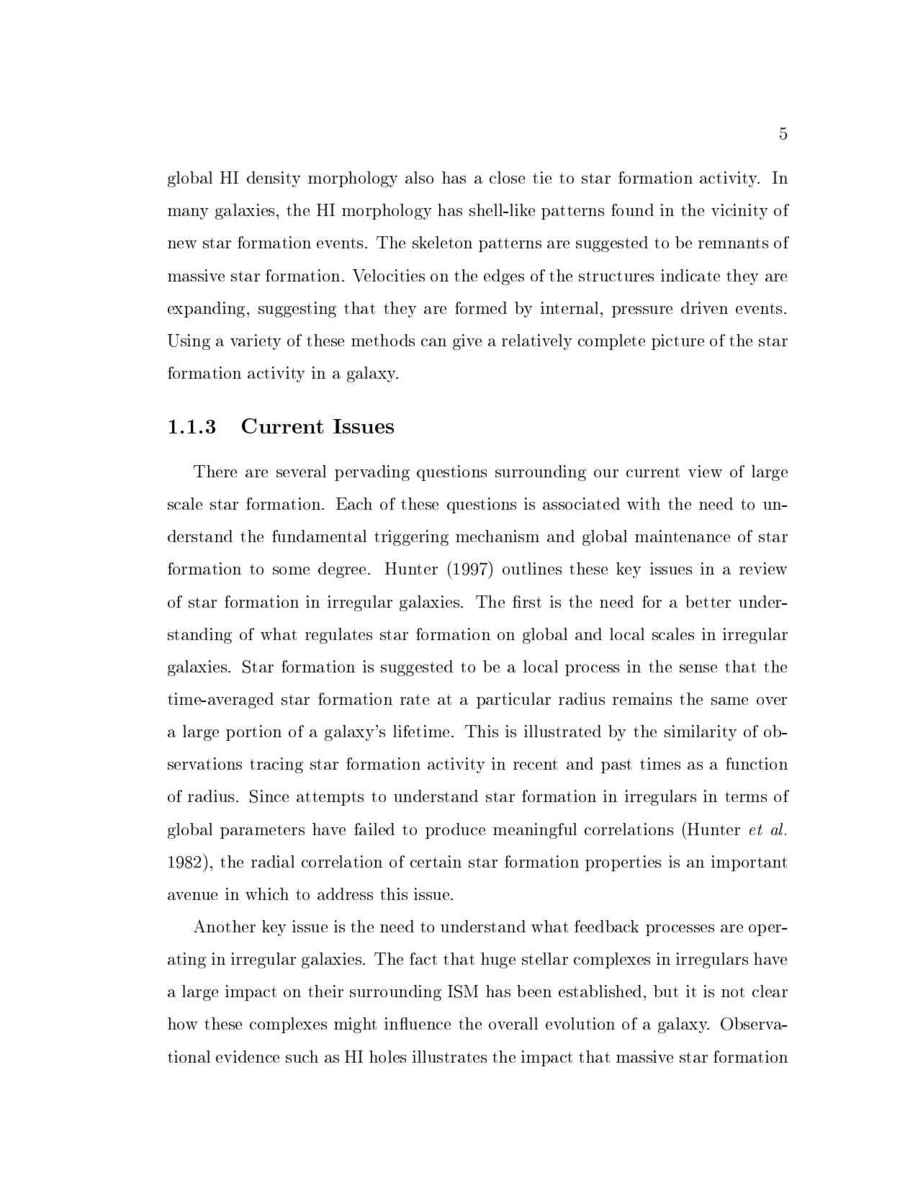Astronomical Applications Department, U.S. Naval Observatory thesis Page 19

5
global HI density morphology also has a close tie to star formation activity. In
many galaxies, the HI morphology has shell-like patterns found in the vicinity of
new star formation events. The skeleton patterns are suggested to be remnants of
massive star formation. Velocities on the edges of the structures indicate they are
expanding, suggesting that they are formed by internal, pressure driven events.
Using a variety of these methods can give a relatively complete picture of the star
formation activity in a galaxy.
1.1.3 Current Issues
There are several pervading questions surrounding our current view of large
scale star formation. Each of these questions is associated with the need to un-
derstand the fundamental triggering mechanism and global maintenance of star
formation to some degree. Hunter 1997 outlines these key issues in a review
of star formation in irregular galaxies. The rst is the need for a better under-
standing of what regulates star formation on global and local scales in irregular
galaxies. Star formation is suggested to be a local process in the sense that the
time-averaged star formation rate at a particular radius remains the same over
a large portion of a galaxy's lifetime. This is illustrated by the similarity of ob-
servations tracing star formation activity in recent and past times as a function
of radius. Since attempts to understand star formation in irregulars in terms of
global parameters have failed to produce meaningful correlations Hunter
et
al.
1982, the radial correlation of certain star formation properties is an important
avenue in which to address this issue.
Another key issue is the need to understand what feedback processes are oper-
ating in irregular galaxies. The fact that huge stellar complexes in irregulars have
a large impact on their surrounding ISM has been established, but it is not clear
how these complexes might in uence the overall evolution of a galaxy. Observa-
tional evidence such as HI holes illustrates the impact that massive star formation
